Last updated: September 2025
For entrepreneurs and gig‑workers in the Sunshine State, buying a car is not only about choosing a model and negotiating a price—it’s about demonstrating affordability with clean, verifiable paperwork. Salaried applicants lean on W‑2s and pay stubs; self‑employed buyers assemble 1099 forms, bank statements and tax schedules that present an accurate income picture. Lenders in the US, UK and Canada assess creditworthiness differently:contentReference[oaicite:3]{index=3}, and Florida dealers often request documentation upfront because there’s no employer record to validate. This guide shows how to package 1099s and bank statements for an auto loan without crossing legal lines.
Our position is compliance‑first and clarity‑driven. We edit and format what you already have so underwriters can verify quickly, without altering facts or inflating income. Used correctly, professional formatting reduces friction, shortens decision cycles and helps you secure the right financing on transparent terms.
Related Entities & Terms
- 1099‑NEC, 1099‑K and Schedule C (US self‑employment forms)
- W‑2 (US), T4/T4A (Canada), P60/SA302 (UK) income slips
- Bank statement loans, bank‑statement mortgages and non‑qualified loans
- Debt‑to‑income (DTI), annual percentage rate (APR), down payment
- Regulators: CFPB, FTC, IRS (US); FCA & GOV.UK (UK); FCAC & CRA (Canada)
- Credit bureaus: Experian, Equifax, TransUnion
- Proof of income editing (our document services)
- Bank statement formatting (our formatting services)
What are the legal basics of buying a car when you’re self‑employed in Florida?
Summary: Self‑employed buyers must prove ability to repay with authentic, consistent documents. Editing for legibility is allowed; changing facts is not. Florida follows national rules, but local lenders often ask for more documentation from non‑W‑2 applicants.
Lenders—whether banks, credit unions or dealerships—must evaluate your ability to repay. In the US, regulations require creditors to verify creditworthiness without prescribing exactly how:contentReference[oaicite:4]{index=4}. The UK’s Financial Conduct Authority (FCA) applies principles‑based guidance: lenders should take reasonable steps to assess whether repayments are sustainable:contentReference[oaicite:5]{index=5}. Canada’s Financial Consumer Agency explains you can finance through a dealership or your bank, and that negotiating a better rate is possible if your accounts are in good standing:contentReference[oaicite:6]{index=6}. The common denominator across jurisdictions is simple: lenders need authentic documentation to determine affordability. Editing or formatting for clarity is acceptable; altering facts is not.
Florida does not impose extra income‑verification laws for auto loans; however, local dealers and regional banks often request more documentation from self‑employed applicants because there’s no employer to call. Expect requests for multiple months of bank statements, two years of 1099‑NEC forms, and a copy of your Florida driver’s license. Similar standards apply elsewhere: UK lenders may ask for SA302 tax calculations, while Canadian lenders accept T4A slips or a Notice of Assessment with 6–12 months of statements. The key is to submit clear, consistent documents that align with your tax filings.
The Consumer Financial Protection Bureau (CFPB) encourages consumers to shop around for auto financing before choosing a vehicle and notes that pre‑approval quotes outline interest rate, term and maximum amount, with negotiable terms:contentReference[oaicite:7]{index=7}. The Federal Trade Commission (FTC) recommends pulling your credit report and getting an “out‑the‑door” price before visiting a dealership; prioritise total cost—not just the monthly payment—and consider a larger down payment to reduce overall borrowing costs. These best practices apply to all applicants, regardless of employment type.
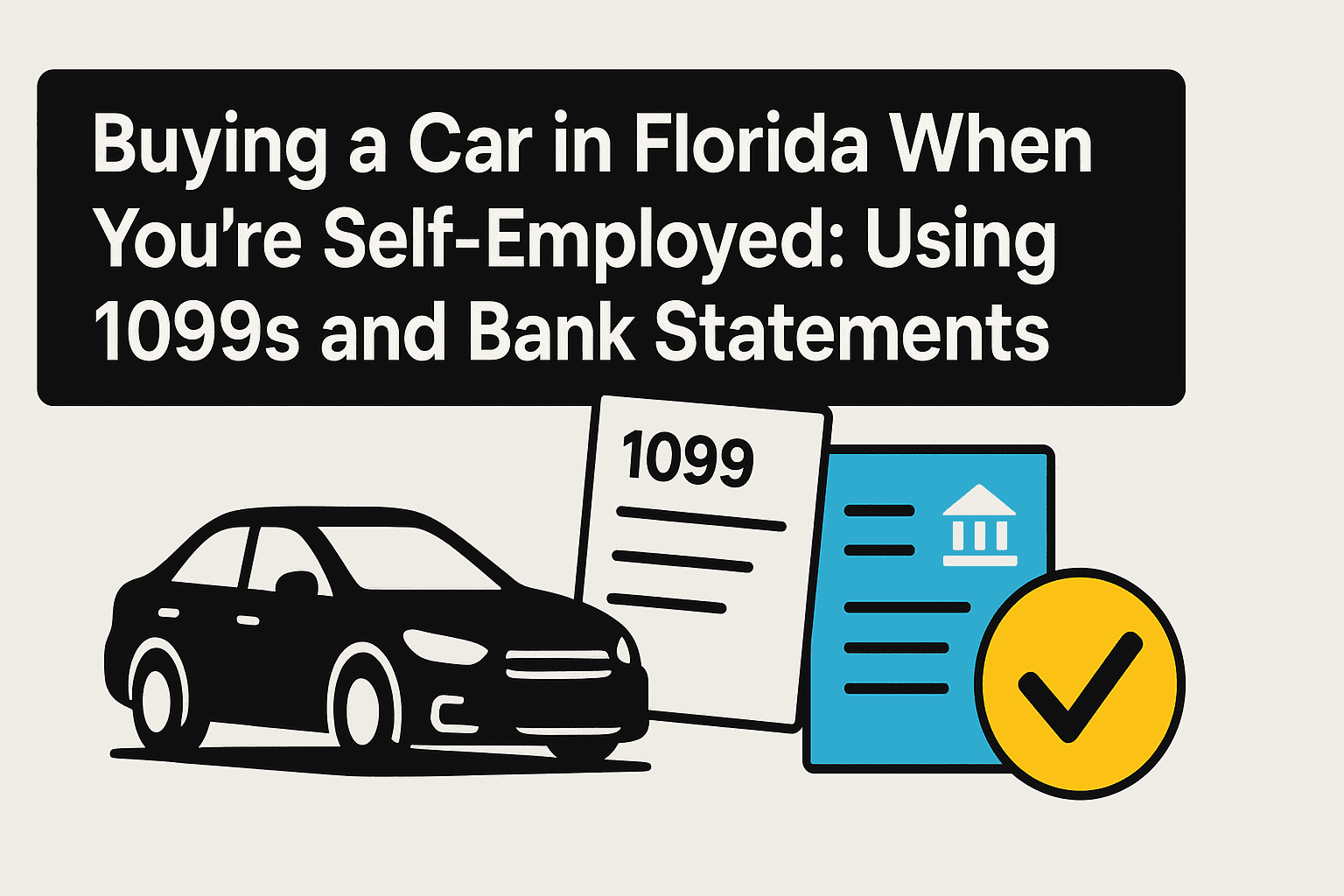
What lenders typically ask for (by channel):
- Dealership financing: Driver’s license, proof of insurance, 6–12 months of statements, two years of 1099s, and your most recent tax return or Schedule C. Some dealers also request utility bills to confirm address.
- Bank or credit union: A fuller package: 12 months of statements, prior‑year return, Schedule C (or equivalent), and any business registration documents. Pre‑approval often requires fewer documents than final approval.
- Specialty/non‑prime lenders: Extended look‑back periods (12–24 months) and more granular bank‑statement reviews, especially for higher loan amounts or irregular income streams.
Regardless of path, your objective is operational clarity: every figure in your summary should tie back to line‑item deposits and tax documentation. Clean packaging prevents avoidable back‑and‑forth and keeps underwriting on track.
Which edits are allowed on income documents?
Summary: Edits that improve readability, organisation and privacy are legitimate. You may redact sensitive data, fix scans, combine files and add navigational aids—without changing amounts or dates. Always retain originals for verification.
Lenders need documents they can read and verify. Legitimate edits enhance clarity without altering numbers. Below we outline permissible improvements for bank statements, 1099s and related documents across the US, UK and Canada.
Allowed edits focus on formatting, organisation and privacy. You can:
- Redact sensitive information. Mask account numbers, tax IDs and home addresses while leaving names, dates, payers and amounts visible. This protects your identity without hindering verification.
- Merge and paginate PDFs. Combine multiple 1099‑NEC forms and bank statements into a single PDF with bookmarked sections. Adding page numbers and a table of contents makes it easy for underwriters to navigate.
- Enhance legibility. Rotate sideways pages, adjust brightness and contrast, straighten skewed scans, and run optical character recognition (OCR) so text is searchable. These adjustments do not change the underlying data.
- Translate or summarise. For UK or Canadian lenders, you may translate foreign invoices or summarise irregular income streams in a cover letter. Keep translations literal and avoid reinterpreting figures.
- Export for consistency. Convert image files or spreadsheets into PDF; standardising file types prevents corruption during upload and ensures consistent viewing on lenders’ systems.
- Add a cover sheet and bookmarks. Provide an executive summary with monthly averages, recurring clients and a contents map. Link bookmarks to each month and form for fast review.
- Include calculation exhibits. Attach a simple deposit‑by‑month table that totals to your 1099 amounts. Keep the exhibit clearly separate from the underlying statements.
Always retain original copies. If asked, provide source files so underwriters can cross‑check. At FinancialDocsProvider.com, our team performs these edits quickly while keeping timestamps and transaction details intact. We also offer proof‑of‑income editing and bank statement formatting to help you meet lenders’ submission requirements without crossing legal boundaries.
What document edits are illegal (and why)?
Summary: Changing factual information—amounts, dates, payees or account details—is fraud. Lenders rely on these records to assess affordability, and discrepancies are easy to detect. Fraud risks denial, civil liability and potential criminal exposure.
Altering factual information on financial documents is fraud. Lenders rely on your 1099s, bank statements and tax returns to determine whether you can afford a car; misrepresenting these numbers can lead to loan denial, civil liability or even criminal charges. Here’s what not to do.
- Do not change amounts, dates or payees. Modifying deposit figures, rewriting payment dates or adding phantom clients falsifies your income. The IRS requires payments of $600 or more to independent contractors to be reported on Form 1099‑NEC:contentReference[oaicite:9]{index=9}; altering that form misrepresents taxable income and exposes you to tax penalties.
- Avoid creating fake 1099s or invoices. Generating forms that were never issued by clients constitutes forgery. Lenders often cross‑reference your documents with tax transcripts, so discrepancies will be flagged quickly.
- Don’t tamper with bank statements. Changing transaction descriptions, inserting additional deposits or removing withdrawals undermines the integrity of your statement. Banks may provide digital copies directly to lenders via open‑banking connections; manipulated PDFs are easily detected.
- Never misstate your employment structure. Claiming you have an LLC when you’re a sole proprietor, or misclassifying yourself as a W‑2 employee, is fraudulent. Lenders verify business registrations and may request EIN documentation.
- Don’t borrow or reuse others’ documents. Lending your friend’s 1099 or using someone else’s bank statements constitutes identity fraud. Regulators like the FTC prosecute dealers who falsify income on behalf of consumers; similar penalties apply to consumers who supply fake proof.
How lenders validate: Underwriters reconcile 1099 totals to deposits, check statement metadata, compare PDF text layers to images, and request transcripts or employer confirmations where applicable. Inconsistencies trigger additional scrutiny or immediate decline. Fraud can damage your credit profile and jeopardise your business. If you’re unsure whether an edit is acceptable, ask a professional. Our role is to improve organisation and clarity, not to fabricate numbers or mislead lenders.
When do self‑employed buyers need professional document formatting?
Summary: Use professional formatting when your income is complex, variable or multi‑stream. Clean, reconciled documents speed underwriting and reduce follow‑ups. The goal is to make verification effortless.
Self‑employed income is often complex. Lenders prefer neat, consistent documentation that matches tax filings. Professional formatting helps you present your earnings clearly, increasing the chances of approval. Here are scenarios where expert help makes sense.
Florida gig worker buying a used car
Alex runs a photography studio in Orlando. His 1099‑NEC forms show varying amounts from different clients, and his bank statements include both business and personal expenses. A local dealership offers in‑house financing, but asks for a year of income proof. Alex partners with us to reconcile his 1099s against 12 months of bank statements, highlight recurring client payments, and add a cover sheet summarising his monthly net income. We merge the documents into a bookmarked PDF and redact non‑essential transactions. Alex submits the file with his Florida driver’s licence and proof of insurance. Because the documentation is organised and verifiable, the loan officer quickly approves his application.
Execution tips: Separate business and personal accounts going forward, label transfers, and maintain an invoice register. These simple controls make future renewals faster.
London consultant applying for PCP finance
In the UK, personal contract purchase (PCP) plans require affordability checks. Sara, a self‑employed marketing consultant in London, submits SA302 tax calculations and three months of bank statements. We rotate and enhance her scanned forms, redact her National Insurance number, and translate receipts from international clients. The lender uses this clear package to assess her creditworthiness, consistent with the FCA’s expectation that lenders take reasonable steps to ensure repayments are sustainable:contentReference[oaicite:10]{index=10}.
Execution tips: Include a short income narrative explaining contract renewals and notice periods. Clarify currency conversions where relevant.
Toronto tech freelancer seeking a line of credit
Canadian lenders sometimes offer vehicle lines of credit instead of conventional loans:contentReference[oaicite:11]{index=11}. Kian runs a software consultancy in Toronto and wants flexibility to upgrade his car yearly. He gathers T4A slips, his CRA Notice of Assessment and six months of statements. We compile these into a cohesive file and remind him to negotiate rates with his bank—a strategy the FCAC notes can yield better terms:contentReference[oaicite:12]{index=12}.
Execution tips: If your cash flow is seasonal, include a month‑by‑month average and a plan for higher‑payment months. Show retainer agreements to evidence recurring revenue.
Professional document formatting is also helpful when:
- You have multiple income streams (e.g., gig work, rental properties, royalties) and need a narrative explaining your income sources.
- Your earnings fluctuate seasonally and you want to show a sustainable average over 12 months.
- The lender uses manual underwriting and requests a summary table of deposits and 1099 amounts.
- You’re applying for a large loan (e.g., a luxury vehicle) and want to present a polished packet.
- You recently changed business structure (sole proprietor to LLC) and need to map names and EINs across documents.
- Your statements include mixed personal/business activity and require clear annotations.
For more details on preparing a complete car loan package, see our self‑employed car loan guide and our article on proving income for a car loan. They cover additional nuances like mixing W‑2 and 1099 income and explaining depreciation deductions.
How does FinancialDocsProvider.com work with self‑employed car buyers?
Summary: We transform raw records into lender‑ready PDFs that withstand scrutiny—fast. Our workflow reconciles figures, preserves privacy and delivers clear navigation. The result is a clean, verifiable package.
Our process prioritises accuracy, confidentiality and speed. We take your raw financial records and deliver lender‑ready PDFs that stand up to scrutiny—usually within 24–48 hours. Here’s how.
- Intake and consultation. You upload or email copies of your 1099s, bank statements, invoices and tax schedules. We review for completeness and suggest any missing documents (e.g., Schedule C, Notice of Assessment). Our team operates under strict confidentiality agreements.
- Reconciliation and cross‑checking. We reconcile 1099 amounts with deposits on your bank statements, flagging any mismatches you need to address. We ensure that the totals match your tax filings and highlight recurring income streams.
- Formatting and redaction. Using industry‑standard software, we rotate pages, adjust contrast, crop scans, paginate and merge documents. We redact personal identifiers (account numbers, addresses) while leaving essential data intact. For multi‑year income, we create tables summarising each year’s totals.
- Quality assurance. A second editor reviews every page for alignment, readability and consistency. We verify that page numbers and bookmarks work and that your summary matches underlying documents. We send you a preview and make minor adjustments if needed.
- Delivery. Once approved, we deliver the final PDF via secure download link or encrypted email. You’ll receive instructions on how to upload the file to your lender’s portal.
What we don’t do: We never alter financial facts or invent data. Our services are purely administrative: we edit, format and organise your documents to meet lenders’ technical requirements. If you’re curious about cost or timing, check our pricing page or contact our team for a quote.
What checklist should you follow before submitting your documents?
Summary: A complete, clean packet accelerates underwriting and reduces callbacks. Use this checklist to ensure every number is traceable and every page is legible.
A well‑prepared packet speeds up approval and reduces questions from underwriters. Use this checklist to ensure nothing is missing:
- Gather income forms. Collect the last two years of 1099‑NEC or 1099‑K forms, any W‑2s (if you also work as an employee), and copies of your 1040 Schedule C. UK applicants should have SA302 summaries; Canadians should include T4A slips and the latest Notice of Assessment.
- Compile bank statements. Download 6–12 months of statements from all accounts showing business income. Ensure digital copies are clear and in chronological order.
- Verify totals match. Sum your 1099 amounts and cross‑check them against deposits. The IRS expects payments of $600 or more to nonemployees to be reported:contentReference[oaicite:13]{index=13}, so amounts should align.
- Redact only sensitive data. Mask account numbers and personal identifiers; leave payers, dates and amounts visible.
- Check legibility. Make sure scans are straight, dark enough and free of blur. Convert images to PDF to prevent issues when uploading.
- Create a cover sheet. Summarise your monthly income, highlight recurring clients and note any seasonal fluctuations. Include your contact information and lender reference number.
- Review local requirements. In Florida, dealers may request proof of insurance and a copy of your driver’s licence; UK lenders might ask for National Insurance numbers; Canadian lenders could require SIN (Social Insurance Number) and proof of residency.
- Ask for professional help if needed. If the list feels overwhelming, let our specialists handle it. We prepare complete car loan packages tailored to your situation.
- Standardise filenames. Use a consistent convention (e.g., 2024‑Bank‑Chase‑Jan.pdf) to prevent upload errors and confusion.
- Lock in a single email address. Use the same contact email across your application, bank, insurer and dealership to avoid verification delays.
- Document explanations. For one‑off transfers (asset sales, tax refunds), include a one‑line note or supporting receipt to close the loop.
Which red flags trigger rejections?
Summary: Underwriters look for consistency, continuity and credibility. Gaps, mismatches and obvious edits stall decisions. Eliminate these issues before you submit.
Underwriters are trained to spot inconsistencies. Avoid these pitfalls to keep your application moving forward.
- Mismatched totals. If the sum of deposits on your bank statements doesn’t align with your 1099s or tax returns, lenders may suspect underreporting or cash payments.
- Missing months. Omitting one or two months of statements raises suspicion; lenders assume you’re hiding something. Provide a continuous sequence.
- Inconsistent names. Payments addressed to different variations of your name or business (e.g., “A.J. Consulting” vs. “AJ Consulting LLC”) without explanation can cause confusion.
- Unusual deposit patterns. Sudden large transfers from unrelated accounts or round‑number deposits may look like staged income. If you received a one‑off lump sum (e.g., equipment sale), include an explanation.
- Obvious edits. Cropped edges, mismatched fonts or pixelated areas suggest tampering. Use professional tools and maintain a consistent appearance throughout the document.
- Outdated addresses or personal data. Ensure your driver’s licence, insurance card and business registration reflect your current Florida address (or UK/Canadian address). Discrepancies can delay processing.
- Lack of business evidence. If you operate under a DBA or LLC, include registration documents. Lenders may require proof that your business is legitimate and in good standing.
- Metadata anomalies. PDFs that show creation timestamps after the statement period or odd producer software can trigger extra verification.
- Unexplained cash deposits. Cash‑heavy activity without invoices or receipts is a common decline reason for self‑employed applicants.
- Back‑to‑front narratives. Summaries that do not tie cleanly to page‑level transactions create needless doubt. Keep your narrative concise and reconcilable.
Where can you find official resources & further reading?
Summary: Rely on regulator‑authored guidance for the fundamentals and use our in‑depth articles for packaging tactics. Start with the resources below, then tailor your packet to your lender’s checklist.
For more guidance on auto financing and income documentation, consult these authoritative sources:
- CFPB’s Auto Loan Guide (USA) – Explains budgeting, loan shopping and pre‑approval:contentReference[oaicite:14]{index=14}:contentReference[oaicite:15]{index=15}.
- FTC’s Financing or Leasing a Car Guide (USA) – Covers credit reports, out‑the‑door pricing and down payment advice.
- FCA Creditworthiness & Affordability Guidance (UK) – Describes lenders’ obligations to assess affordability and treat customers fairly:contentReference[oaicite:18]{index=18}.
- FCAC Car Financing Options (Canada) – Explains dealership loans vs. bank loans and notes that you may negotiate better rates through your own financial institution:contentReference[oaicite:19]{index=19}.
- IRS Instructions for Forms 1099‑MISC & 1099‑NEC – Clarifies reporting requirements for nonemployee compensation and when to issue 1099‑NEC forms:contentReference[oaicite:20]{index=20}.
Additional reading on our site:
- Review our in‑depth guide on self‑employed car loans for documents, rates and tips.
- Learn how to package W‑2 and 1099 income in our article on proving income for a car loan.
- Curious about the number of pay stubs lenders need? See how many pay stubs you need for car loans.
- If you’re renting before buying, explore Florida proof of income requirements for rentals to prepare future documents.
For personalised help, review our financial document services, compare pricing or simply contact our team.
FAQs
Below are concise answers to common questions from self‑employed buyers. Use these to right‑size your document packet and set expectations before you apply.
How many months of bank statements do car lenders require for self‑employed borrowers?
Most lenders in the US and Canada ask for 6–12 months of statements to verify consistent income, while UK lenders typically want at least three months. Some specialty lenders may request up to 24 months for large loans or irregular income streams. Always check your lender’s specific requirements.
Can I use 1099 forms instead of W‑2s when applying for a car loan?
Yes. If you’re self‑employed or work as an independent contractor, 1099‑NEC and 1099‑K forms are your primary income proof. Submit two years of 1099s along with bank statements and your Schedule C or tax return. Lenders evaluate nonemployee compensation to determine your income stability.
Do lenders verify self‑employed income directly with the IRS?
Some lenders request your tax transcripts via the IRS Income Verification Express Service (IVES). Others rely on your documents but may spot‑check totals. Always ensure that the amounts on your 1099s and statements match your filed returns to avoid discrepancies.
What if my income fluctuates from month to month?
Freelancers often have uneven earnings. Provide at least 12 months of statements so lenders can calculate an average. Include a cover letter explaining any large dips or spikes (for example, seasonal contracts). Highlight recurring clients and retained contracts to demonstrate stability.
Do Florida lenders have different rules for self‑employed car buyers?
The fundamental requirements are similar nationwide, but local dealers may ask for additional documentation such as proof of insurance and a Florida driver’s license. There are no extra state laws governing income verification; lenders still follow federal guidelines and industry best practices.
Need accurate, reliable financial documents fast? Contact FinancialDocsProvider.com now.
How many months of bank statements do car lenders require for self‑employed borrowers? Most US and Canadian lenders request 6–12 months of statements; UK lenders generally want at least three months. Some specialty lenders may ask for up to 24 months for larger loans or irregular income. Verify the exact requirement with your lender.

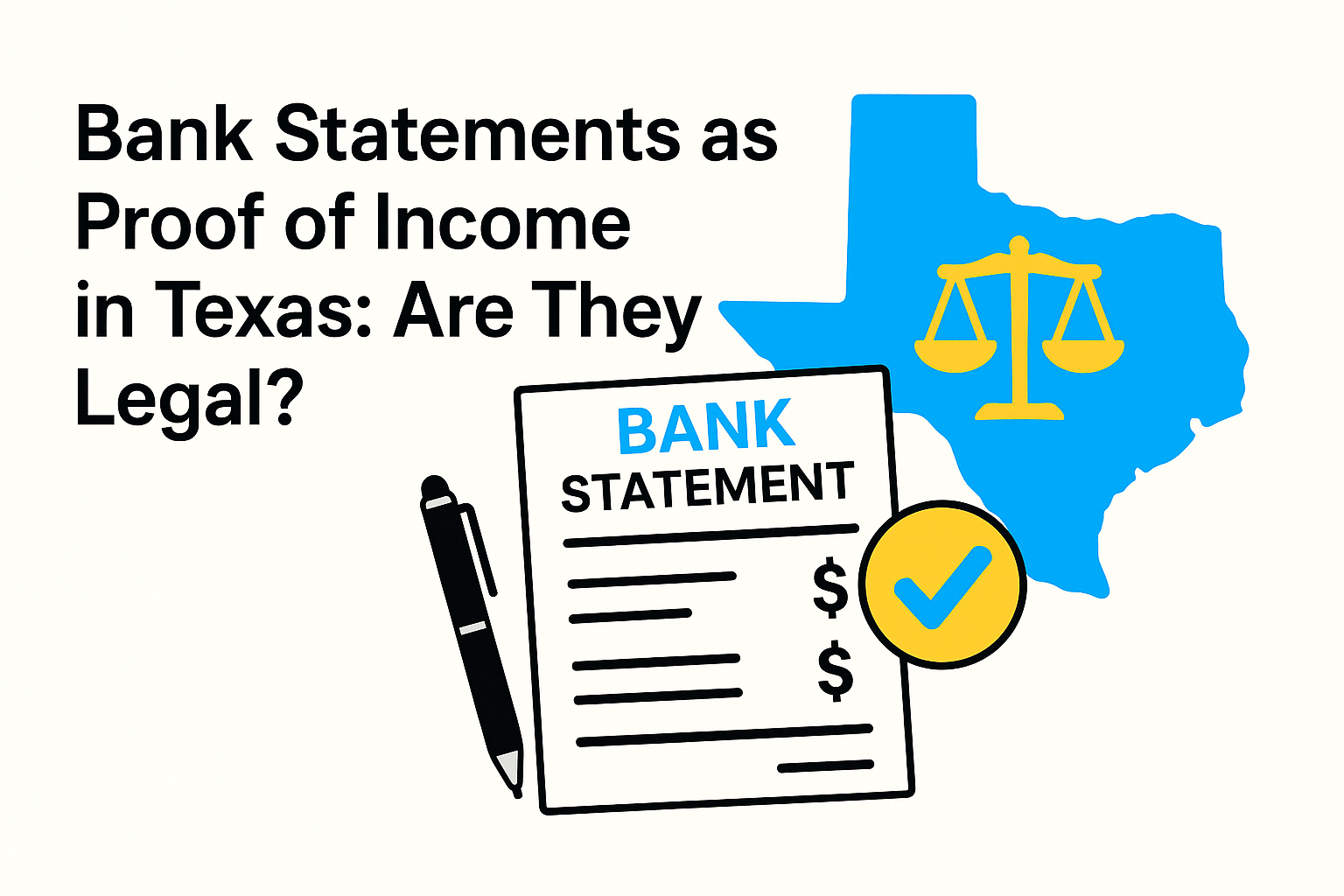
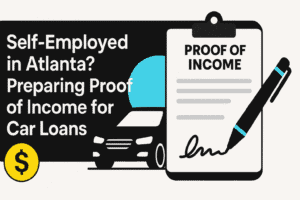
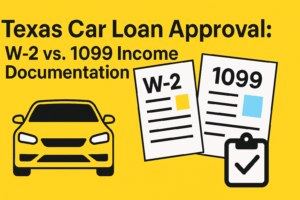

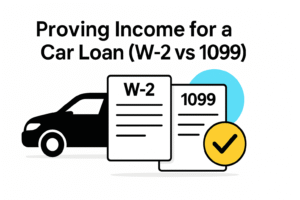
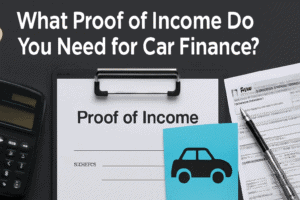
Add comment